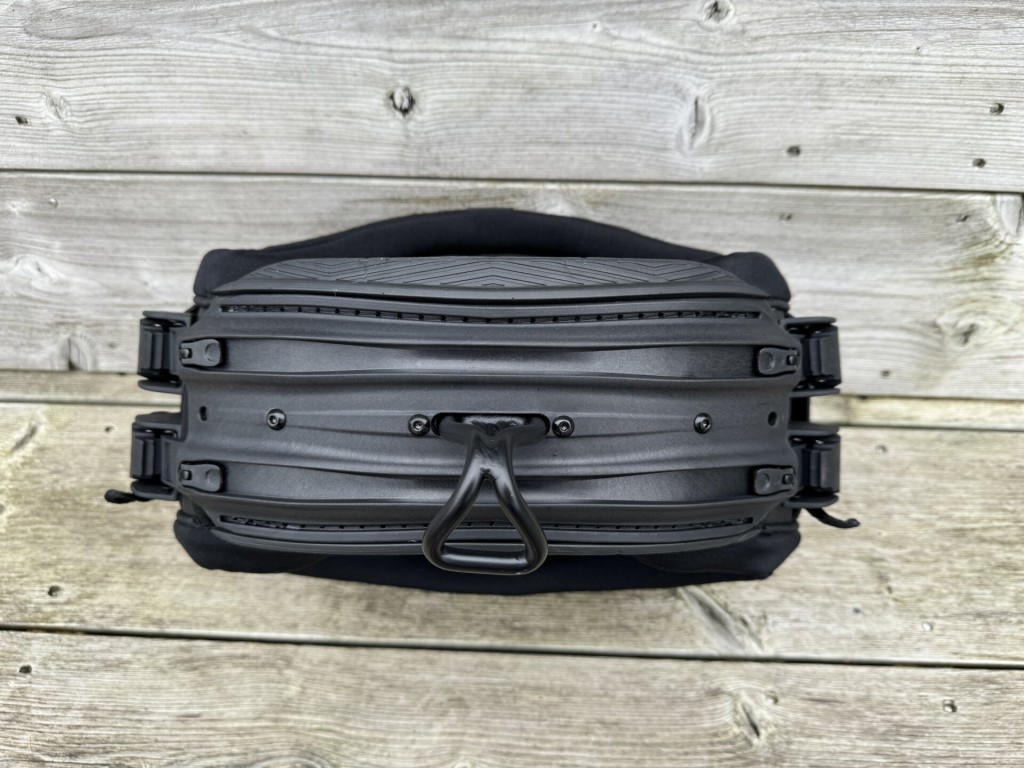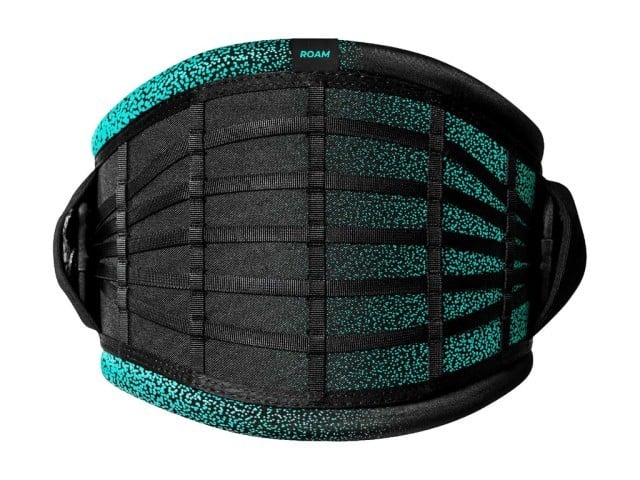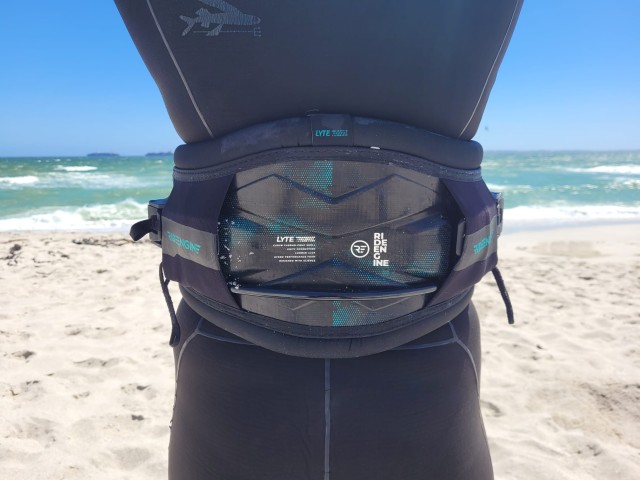At A Glance
Ride Engine has been championing harnessed innovation and development for some time now. Many moons ago, they were the first company to explore the possibilities of a rigid shell harness, a tech that is now pretty much synonymous in the harness industry.
Next, they focused on the webbing straps and the way we connect the spreader bar to the harness with the Unity system, which featured the Unity Ladder Lock composite “strap” concept and the Unity Spreader bar.
For 2025, they have taken that development even further with what might just be the pinnacle of harness design. The new Hyperlock system will be introduced as the next evolution in harness and spreader bar integration.
This new system features four ratchet buckles, two on each side. If you’ve ever used ski boots, it’s a similar system, but it’s been designed to withstand the stresses and strains of saltwater use. In addition to this new Hyperlock design, the rest of the harness has been tweaked, too.
A 12K Carbon STEP-2 hard shell is the latest design from the creators of some of the best harnesses in the world. Utilising biometrically derived shaping on all axes, it boasts better comfort and fit than ever before.
The internal Fusion closed-cell foam padding has also been upgraded, adding more comfort and a better fit. The whole package is remarkably lightweight, with a medium harness weighing just 1kg.
On The Water
I’ve long been a fan of Ride Engine products; they were my go-to harness of choice for many years. I’ve not used one for maybe five years now, so I was very excited when Gary Siskar from Ride Engine called and told me about the latest project they had been working on. I was promised one of the first production models and the opportunity to be among the very first testers to get to experience this groundbreaking new technology.
The harness is striking, the Hyperlock system is quite a departure from the Unity system they used previously. It’s very easy to set up and tighten your harness. Harnesses are a very personal affair, and you should always try one on to check the fit before you buy it.
Ride Engine has worked hard on the shaping for the Elite Carbon Hyperlock, and the rigid shell has been designed to be as comfortable as possible for a wide range of body shapes. I often spend up to four hours on the water at a time testing, and this really highlights how comfortable my harness is.
Any pressure points or uncomfortable spots will soon develop into a painful session cut short. I didn’t experience any of that with the Elite Carbon Hyperlock. It was comfy from the get go. Even during long overpowered big air sessions I didn’t notice any movement or discomfort which is quite the accolade for a harness.
Part of the key to this is the Hyperlock System. With traditional webbing straps it is often tricky to get the right amount of tension and get the harness tight. As soon as you hook into a kite the webbing can stretch a bit and give and you often find your harness isn’t quite as tight at the end of the session as it was at the beginning.
With the Hyperlock, you can crank the harness on super tight, and it will stay tight for the entire duration of your session. This eliminates any riding up, which is one of my biggest pet hates with harnesses. You can even tighten it up on the water while you are riding, which you can’t do with a webbing design.
During one session, I forgot to tighten it, and when I noticed, after the first tack out, I was able to crank it up with one hand. Even more impressive, I was wearing gloves. I did this while cruising along at 20mph on a strapless waveboard in rough seas. I got the perfect amount of tension and enjoyed a great two-hour session. This is something totally unique to this design, and it’s pretty incredible.
I thought my favourite harness would be back in use after a few sessions, but I kept getting this out of the van, and I’ve not stopped using it ever since it arrived. Is there anything I don’t like about it? Undoing the double ratchet is a bit of a technique at first, but once dialled in it is easy to get used to.
I also wondered if the top of the spreader bar pad could be beefed up with more padding, as when I was riding with no neoprene in Morocco, I did feel it after lots of sessions boosting jumps with the kite pulling me up. I chatted to Gary Siskar from Ride Engine about this and they put a lot of time into tuning this part and settled on this version to improve movement and keep the whole product light. It’s really a niggle and not something that would put me off, the fact this has become my go to harness is proof of that. It’s worth noting my usage is usually about five times that of a normal rider as I’m always on the water testing kites and boards.
Time will tell on the durability of the Hyperlock System, but it looks to be incredibly well-made. They have tested it in the field for 1.5 years now and are very confident about its durability. To back this up, they have asked me to keep mine, stress test it as much as possible, and report back in six months, which I will…
Elsewhere, there is an Internal Elastic Waist Belt, a full neoprene wrap with EVA anti-slip inserts for comfort, leash attachment points on each side, and a handle-pass leash attachment on the back of the harness. There is an option for a rope slider bar as well as the hook, and there is a pocket for a hook knife with easy access; this is sold separately, though.
Overall
I’ve been incredibly impressed with this harness, and it is my current go-to; it comes out of the van whenever I am at the beach. It’s light, super comfortable and incredibly easy to put on and take off.
The Hyperlock allows you to put plenty of tension into the harness, which locks it in place. As the Hyperlock system can’t stretch, you get a secure and similar feel from the get-go that remains until you take it off at the end of the day.
As always, the overall finish and quality of the design are right up there with the level we have come to expect from Ride Engine. It’s a stunning harness, and I am confident that if it fits you, you’ll fall in love with it just like I have. I’m not sure I can ever go back to webbing again…
Videos
This review was in Issue 108 of IKSURFMAG.
For more information visit Ride EngineRelated
By Rou Chater
Rou has been kiting since the sports inception and has been working as an editor and tester for magazines since 2004. He started IKSURFMAG with his brother in 2006 and has tested hundreds of different kites and travelled all over the world to kitesurf. He's a walking encyclopedia of all things kite and is just as passionate about the sport today as he was when he first started!






























